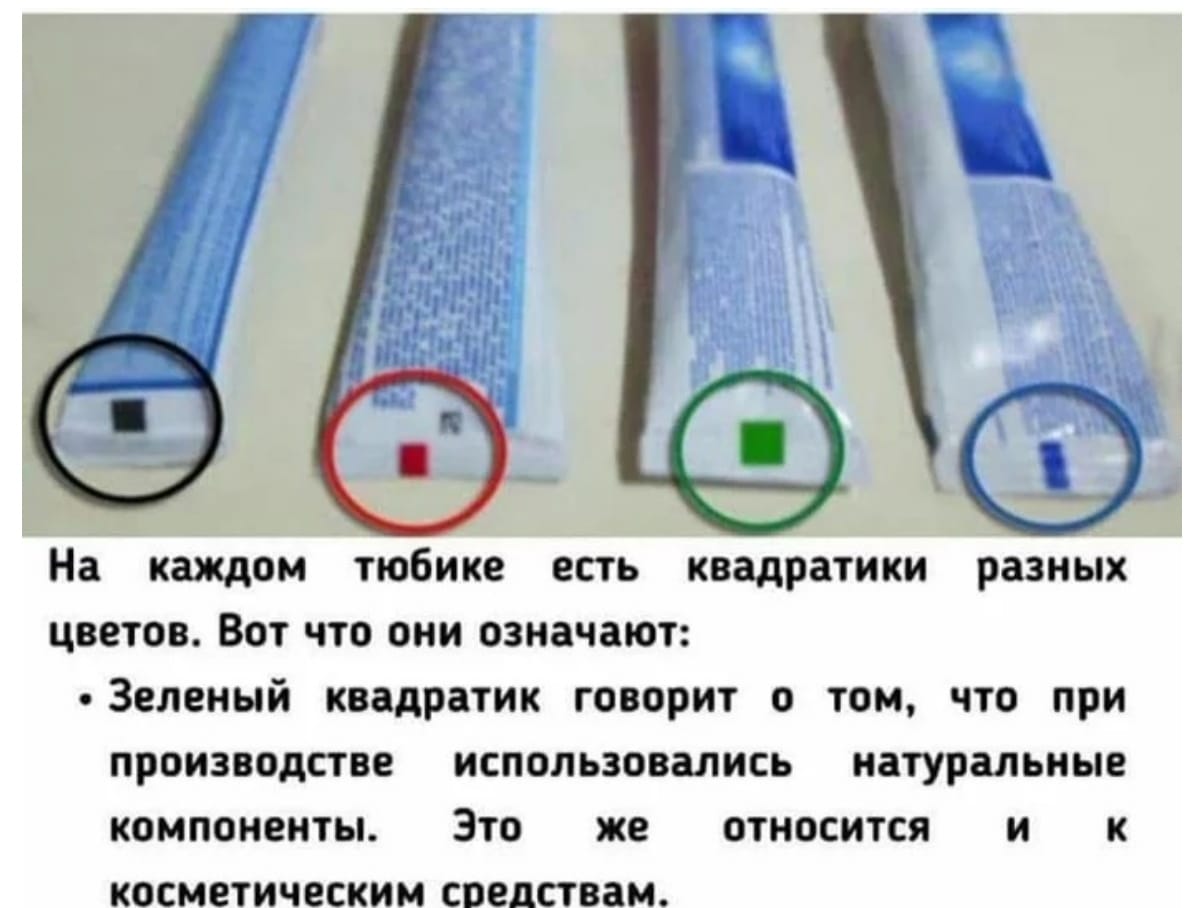On many resources you can find a kind of life hack that tells about the meaning of the colored rectangle at the very end of a tube of standard toothpaste. We have checked whether this information is true.
According to numerous sources, if there is a black line on the tube, this means that the product consists of 100% chemicals. This paste is prohibited for use by children, and adults can only use it for whitening.
Blue markings on toothpaste tubes indicate that it contains about 80% synthetic and abrasive ingredients. With regular use, this leads to periodontal disease and other oral diseases.
An indicator that the paste consists of 50% chemicals is a red stripe. This product is not recommended for people with bleeding gums and sensitive enamel.
Finally, green labeled pasta is an ideal choice. It has a natural composition and is recommended by dentists.
A permanent expert spoke about this pattern on Channel One in Elena Malysheva’s program “Live healthy». You can also read about it on resources such as “Photo Country», "Review», Setafi.com, "Belnovosti», "Zen», "VKontakte», as well as on various popular YouTube—channels. Information is actively disseminated in Instagram.
Strictly speaking, there is immediately some theories about the meaning of colored stripes on toothpaste tubes. In addition to the composition, they mention the period of continuous use, the percentage of abrasive particles, the income level of consumers, frequency of use and even territorial purpose.
However, if we look at the websites of more or less serious organizations (for example, such as a medical website Healthline or one of the world's leading toothpaste manufacturers Colgate), then it turns out that the colored rectangles on the tubes play a completely different role, namely a technical one. They are present on tubes not only of toothpaste, but also of other products, and they have one purpose: to show the sensor used in conveyor production the place where the tubular blank needs to be cut and sealed. It is important that this strip contrasts well with the background, and the colors are at the discretion of the manufacturer. Usually dark marks are applied to light-colored packages, and vice versa. A diagram of the operation of such a conveyor can be seen Here, however, a video depicting this process will be more clear:
Despite the fact that experts have been trying for many years to convince the public that theories about the special meaning of the color on a tube are fake, misleading materials continue to spread victoriously across the Internet. Some companies even devote business letters to this problem:

If we talk about the parameters that are really worth paying attention to when studying toothpaste packaging, then how claim specialists are:
1) ppm - indicates the concentration of fluoride in the paste and should normally be 0.13–0.15%. Fluoride is a building material for our bones, but there should not be too much of it. For example, for preschoolers the ppm norm for toothpaste is 0.05;
2) RDA - determines the abrasiveness of the paste (its ability to clean mechanically). RDA ranges from 20 (for sensitive teeth) to 250 (for intensive whitening) units.
3) M (6M, 12M or 24M) - the number of months during which the product can be used after opening the package. The mark is usually placed on a picture of a jar with an open lid.
Cover photo: social networks
Not true
If you find a spelling or grammatical error, please let us know by highlighting the error text and clicking Ctrl+Enter.






